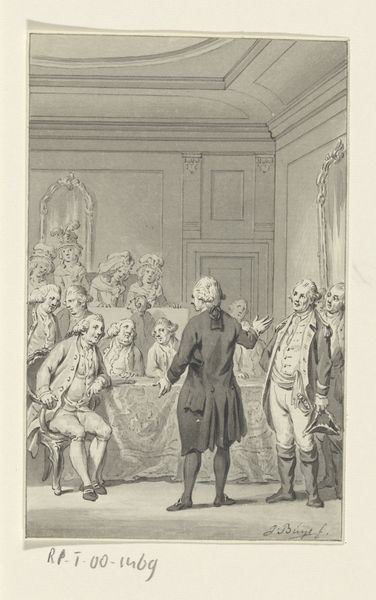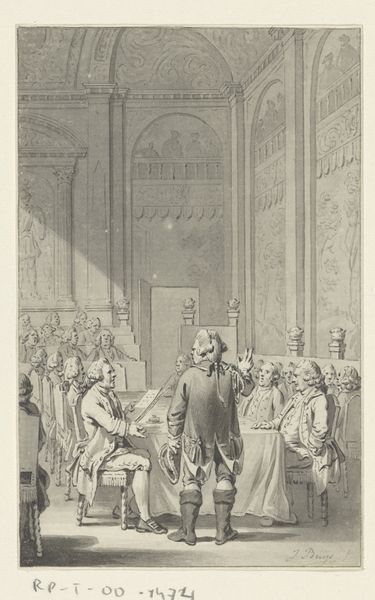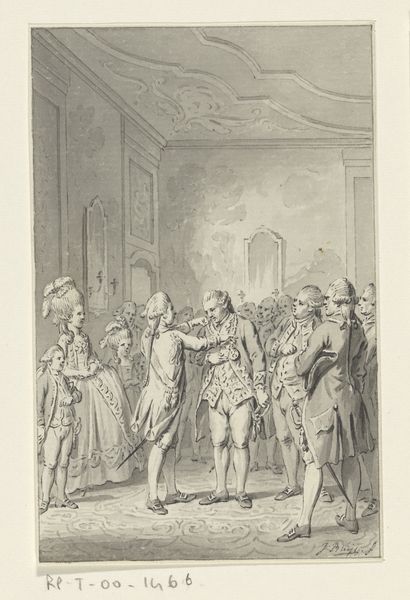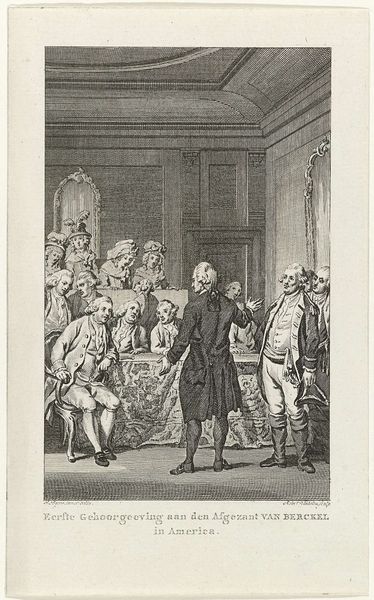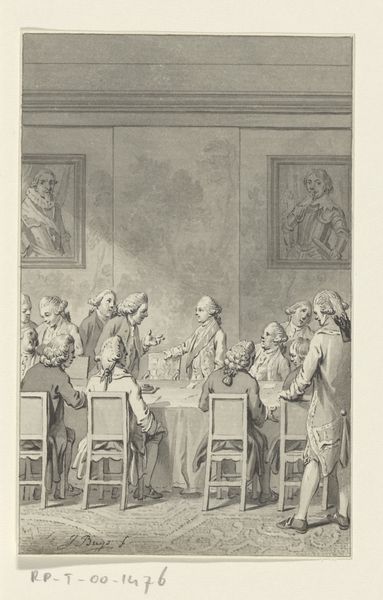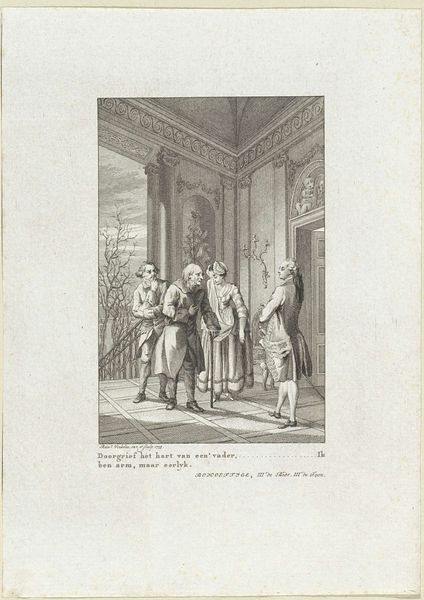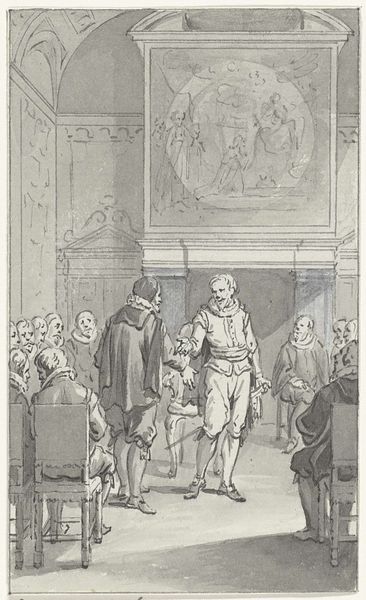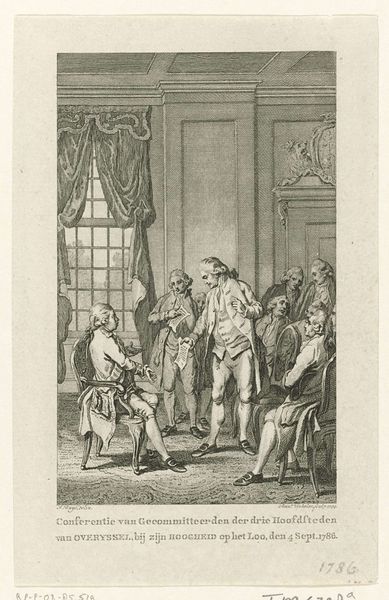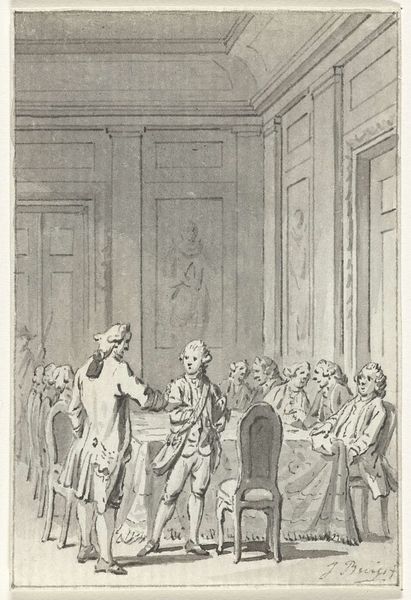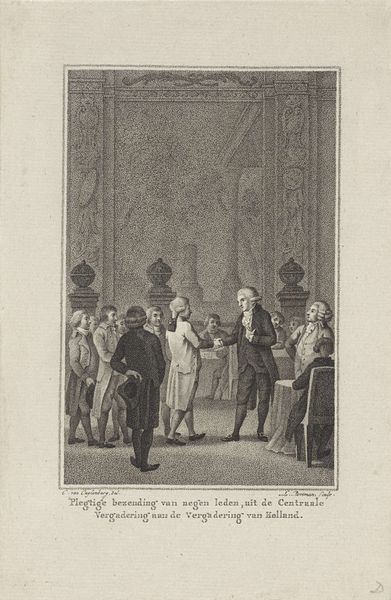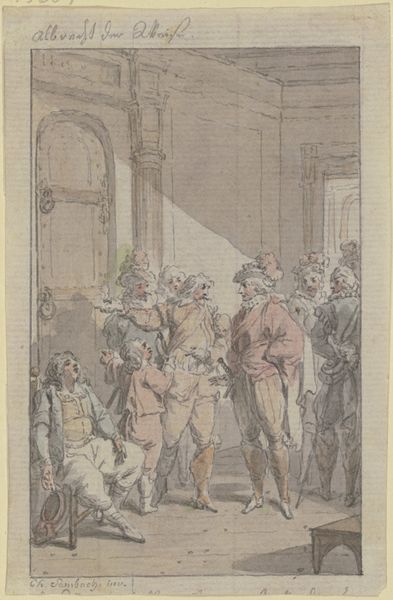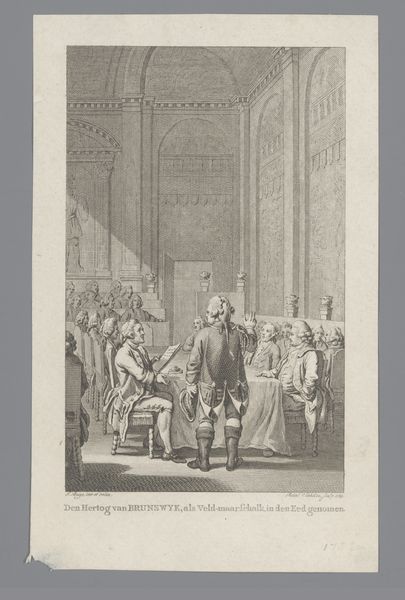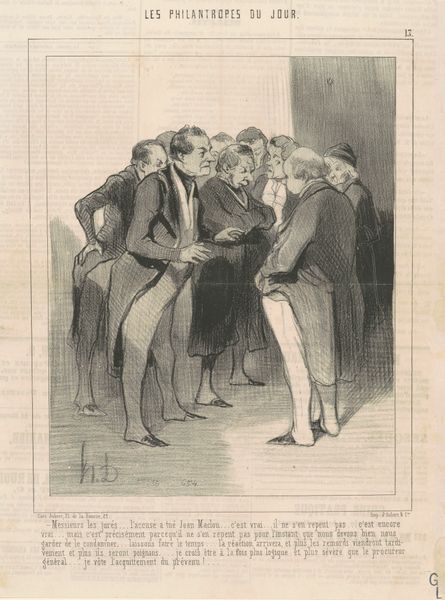
Ontvangst van de eerste Nederlandse gezant in de Amerikaanse senaat, 1783 1788 - 1790
0:00
0:00
drawing, ink, pen
#
portrait
#
drawing
#
pen illustration
#
old engraving style
#
ink
#
classicism
#
pen
#
genre-painting
#
history-painting
Dimensions: height 143 mm, width 91 mm
Copyright: Rijks Museum: Open Domain
Editor: This drawing, made with pen and ink around 1788 to 1790 by Jacobus Buys, depicts "The Reception of the First Dutch Envoy in the American Senate, 1783". The scene has such a formal, almost staged quality. What strikes you when you look at it? Curator: Indeed, that sense of formality resonates. But let’s consider what the artist chooses to show us, and more importantly, what symbols might be embedded within. What kind of cultural exchange is on display? What are your thoughts on that central handshake? Editor: Well, the handshake feels incredibly significant, a physical manifestation of diplomatic relations. But it also feels a little...stilted? Perhaps because everyone else is just watching. Curator: Precisely. Consider the composition itself: the figures arranged almost as a frieze. This harkens back to classical imagery, invoking a sense of historical weight and legitimacy for this newly formed relationship. Even the clothing, though of the time, suggests a timeless, virtuous scene. Does that strike you as contrived, or meaningful? Editor: Meaningful, I think. It’s like they are trying to create an instant historical precedent. Projecting gravitas onto the event, if that makes sense? The artist and those he represented wanted this encounter to have lasting weight. Curator: Exactly. Think of the power dynamics at play here. The Dutch Republic was among the first to recognize the United States. The symbolic weight of that act and how it cemented cultural memory and the narratives they want to persist through generations, like this image. It becomes more than just a record, wouldn’t you agree? Editor: Absolutely. I hadn’t considered the way the artist uses classical references to amplify the importance of the event itself. Now I see how it acts as both a historical document and a piece of persuasive visual rhetoric. Thank you. Curator: My pleasure. Looking at art like this makes me rethink how much cultural symbolism we consume daily without fully understanding its underpinnings.
Comments
No comments
Be the first to comment and join the conversation on the ultimate creative platform.
